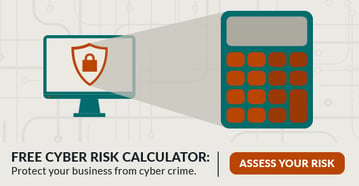 While this time of year brings sunshine and warmer temps, it also comes with the potential of tornadoes and severe weather. Homeowners, renters, business and vehicle owners can find themselves in a financially challenging situation following a spring storm if they haven't checked their insurance coverage carefully.
While this time of year brings sunshine and warmer temps, it also comes with the potential of tornadoes and severe weather. Homeowners, renters, business and vehicle owners can find themselves in a financially challenging situation following a spring storm if they haven't checked their insurance coverage carefully.
An article from Property Casualty 360, provides a checklist of best practices for protecting your assets during this season of storms.
- Verify your home is insured for its current value.
- Find out what kind of home insurance policy you have.
- Find out if you have a specific deductible in the event of a tornado or windstorm.
- Understand the claims process before you have to make a claim.
- Does your policy have any special limits or policy features?
- Prepare an inventory of the contents in your home, including contents in additional structures like tool or garden sheds.
- Find out what kind of coverage you have if there is a power failure.
- Find out what your limit is for Additional Living Expenses (ALE) and how you can expect the coverage to work.
- Make sure your car insurance includes comprehensive coverage, for damage such as hail, falling objects and windstorms.
- Ask if you have coverage for a rental car if your car needs repairs.
- If you have a vehicle in storage, make sure you haven't forgotten about coverage while it's there.
- If you sustain storm damage, contact your insurer as soon as possible and start the claims filing process. For customers of R&R, we recommend adding our CSR24 phone number, as well as the phone number for your insurance carrier to your cell phone. This will ensure you have information at your fingertips should an emergency arise. Feel free to contact your Personal Lines agent for assistance!
For more information about properly protecting your family and the assets you've worked so hard to acquire, contact a member of our Personal Lines team.

 Choosing generic drugs over the brand name is generally less expensive. However, many people question whether generic drugs are as good, effective or safe as their brand name counterparts. The perception is that since many generic items found in grocery stores tend to be of lesser quality, the same must be true for medications. Fortunately, in the case of prescription and over-the-counter (OTC) medications, generic substitutes are the equivalent of brand name drugs. The U.S. Food and Drug Administration (FDA) regulates the chemical equivalency of generic drugs to ensure they are just as safe and effective as the brand name drugs they mimic.
Choosing generic drugs over the brand name is generally less expensive. However, many people question whether generic drugs are as good, effective or safe as their brand name counterparts. The perception is that since many generic items found in grocery stores tend to be of lesser quality, the same must be true for medications. Fortunately, in the case of prescription and over-the-counter (OTC) medications, generic substitutes are the equivalent of brand name drugs. The U.S. Food and Drug Administration (FDA) regulates the chemical equivalency of generic drugs to ensure they are just as safe and effective as the brand name drugs they mimic.
 Last year was a pivotal year for our customers and our associates here at R&R Insurance. In 2017, we partnered with one of our carriers, West Bend Mutual, to utilize their in-house Service Team for all of our West Bend Mutual Personal Lines clients.
Last year was a pivotal year for our customers and our associates here at R&R Insurance. In 2017, we partnered with one of our carriers, West Bend Mutual, to utilize their in-house Service Team for all of our West Bend Mutual Personal Lines clients. As prescription drug costs continue to increase, it is important for employers to understand the trends behind cost of prescription drugs
As prescription drug costs continue to increase, it is important for employers to understand the trends behind cost of prescription drugs  The IRS has released updated tax withholding tables that employers must use in 2018. The new tables reflect the changes made by the tax reform law—which was enacted December of 2017. Employers do not need to obtain new W-4 forms from employees.
The IRS has released updated tax withholding tables that employers must use in 2018. The new tables reflect the changes made by the tax reform law—which was enacted December of 2017. Employers do not need to obtain new W-4 forms from employees. Do you know what the following people have in common?
Do you know what the following people have in common? One of the challenges that businesses have in protecting themselves from cyber attacks is keeping up with patching vulnerabilities. In 2017 we saw in both the WannaCry and the Petya/NotPetya events how quickly malware can spread globally through un-patched, unsupported software.
One of the challenges that businesses have in protecting themselves from cyber attacks is keeping up with patching vulnerabilities. In 2017 we saw in both the WannaCry and the Petya/NotPetya events how quickly malware can spread globally through un-patched, unsupported software. Many employee benefits are subject to annual dollar limits that are periodically increased for inflation. The Internal Revenue Service (IRS) recently announced cost-of-living adjustments to the annual dollar limits for various welfare and retirement plan limits for 2018. Although some of the limits will remain the same, many of the limits will increase for 2018.
Many employee benefits are subject to annual dollar limits that are periodically increased for inflation. The Internal Revenue Service (IRS) recently announced cost-of-living adjustments to the annual dollar limits for various welfare and retirement plan limits for 2018. Although some of the limits will remain the same, many of the limits will increase for 2018. Today's modern vehicles have electronics throughout; in the doors, under the seats, behind the dashboard, in the engine and even in the trunk. With so many electronics susceptible to flood-related failure, most cars that take on water cannot be be repaired.
Today's modern vehicles have electronics throughout; in the doors, under the seats, behind the dashboard, in the engine and even in the trunk. With so many electronics susceptible to flood-related failure, most cars that take on water cannot be be repaired.